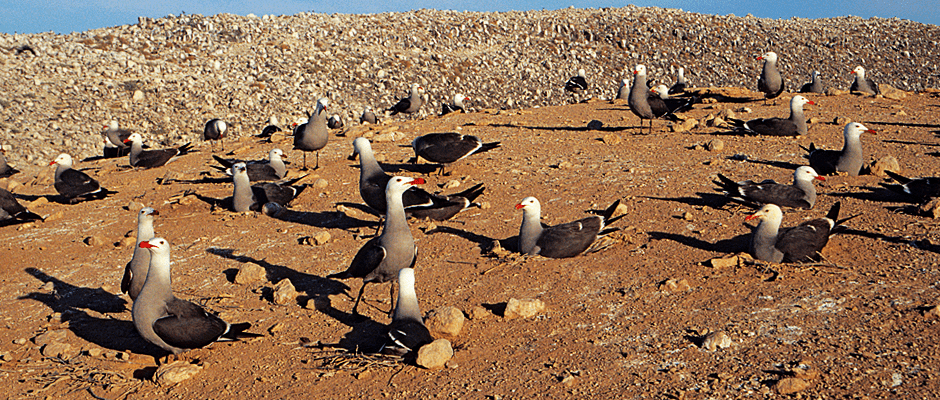Share this article
Past raises questions about Heerman’s gulls’ future
Researchers who delved 50,000 years into the past of Heermann’s gulls (Larus heermanni) said a warmer climate could cause its population to decline.
Andres Aguilar, an assistant professor at California State University in Los Angeles and a coauthor of the study published in The Auk: Ornithological Advances, said his findings are a “red flag” for Heermann’s gulls.
“Their breeding cycles are tied to local oceanic conditions,” Aguilar said.
So far the gull population appears to be stable and healthy despite issues such as invasive species and predators, Aguilar said, but it remains at risk since it’s largely restricted to nesting on just one island, Isla Rasa, in the Gulf of California.
Aguilar found that the population of Heerman’s gulls expanded about 50,000 years ago as glaciers retreated and populations of their main prey items, sardines and anchovies, increased in the oceans.
But higher ocean temperatures cause sardines and anchovies to decline, Aguilar said. This can influence whether or not the birds make the decision to breed.
“The implication is, if sea surface conditions are somehow changing or are warming in some other way, it’s impacting the prey base and could have long-term effects on their population,” Aguilar said.
Aguilar said some changes in climate are already occurring and can be seen in El Niño years, when anomalies cause ocean surface temperatures to rise roughly every seven years. “A concern could be if these are more common,” he said.
As part of the study, researcher collected blood samples in 2011 and 2012, sequenced the mitochondrial DNA of nearly 300 Heermann’s gulls and used statistical analyses to understand patterns of their genetic diversity through variations in their DNA.
Header Image: Heermann’s gulls breed in large colonies on Isla Rasa in the Gulf of California. ©C. Contreras








